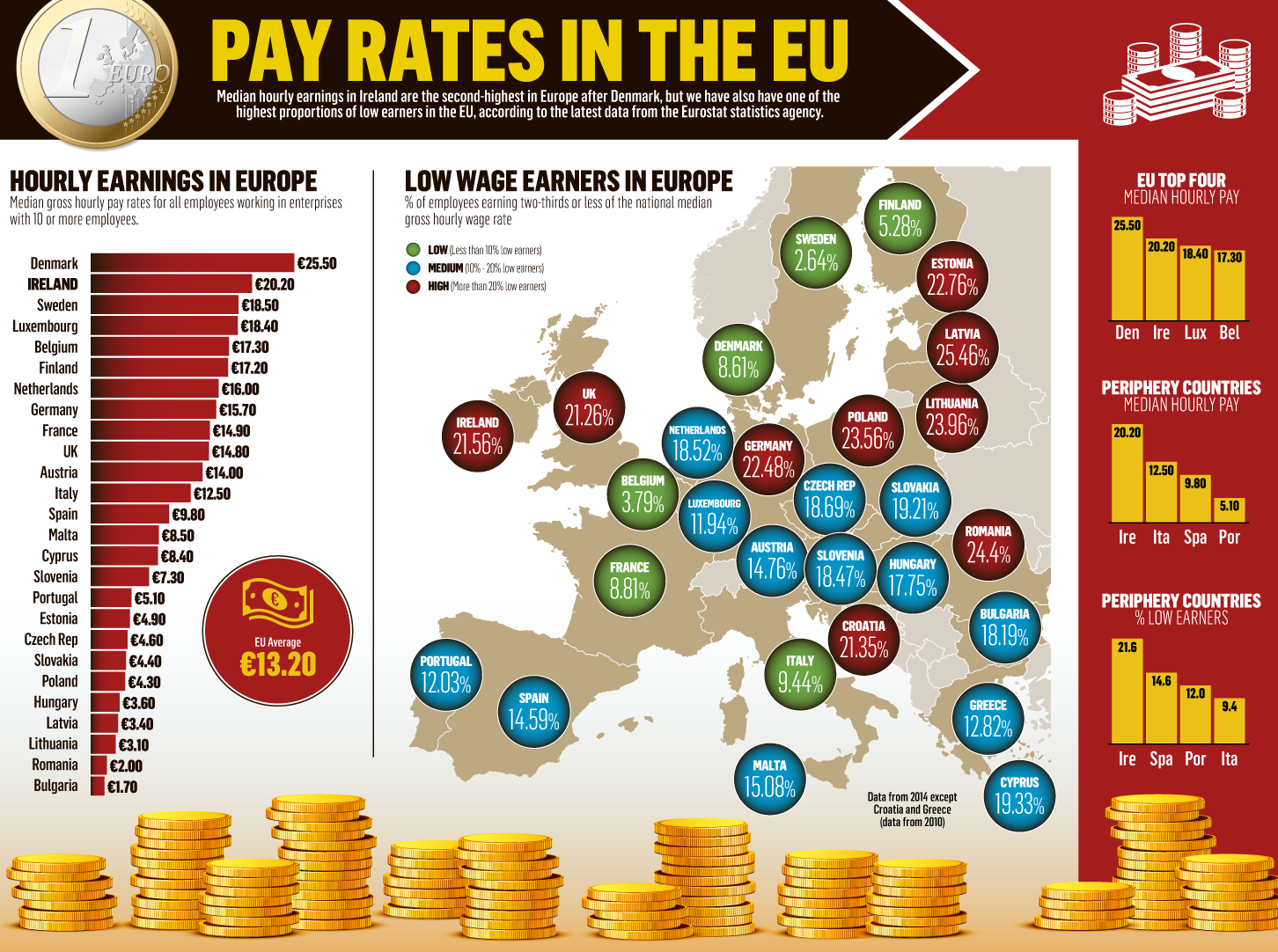The devastation and hardship brought about by the recession is still fresh in the minds of many Irish people. However, the latest data shows that the country is now faring better than most when it comes to income earnings.
Latest data from Eurostat reveal that the average Irish hourly wage is the second highest in the EU, behind only Denmark.
Eurostat calculates that the average Irish hourly rate of pay is €20.20 per hour.
While the statistics appear to point to a thriving economy, a closer look reveals some startling realities about how wealth is distributed in the Irish economy.
To begin with, the Eurostat data only examine the median income from firms with more than 10 employees. This automatically strips out much of the SME sector, while providing a disproportionate weight to large multinational firms which can afford to pay higher wages to their employees.
While the average Irish wage is only slightly behind Denmark’s rate of €25.50, the difference in inequality levels between how wages are distributed in both economies makes for stark reading.
The Eurostat data examines the proportion of low-wage earners across the continent. Low-wage earners are defined as those employees earning two-thirds or less of the national median gross hourly earnings.
While in Denmark the percentage of low-wage earners stands at just 8.6pc, the Irish figure is 21.6pc – making it one of the countries with the highest proportions of low paid workers in the EU.
Only Estonia, Latvia, Lithuania, Latvia, Poland, Romania and Germany have a higher proportion of low-wage earners, making Ireland the country with the second-highest ratio of low-paid workers in Western Europe. Having said that, Irish policymakers can point to the fact that Ireland has one of the highest hourly minimum wage rates.
It isn’t so long ago that Ireland was being labelled as one of Europe’s “PIIGS” on account of the country’s heavy indebtedness. So how do Irish workers compare to other peripheral European countries that were worst affected by the crisis?
Significantly, Eurostat did not provide figures for the average or minimum hourly rate in Greece, an indication of continued difficulties with the country’s tax collection and reporting standards.
Italy’s average hourly rate is €12.50 per hour, while the Portuguese worker’s average pay is just €5.10 an hour. Across the EU as a whole, the average rate stands at €13.20.
The average number of low-income earners on the continent stands at 17.2pc.
It may take Britain some time to negotiate its exit from the EU, but given the overall context of the Brexit conversation, it is worth noting how the UK compares to the EU as a whole.
Employees in the UK earn an average of €14.80 per hour, although similarly to Ireland, the figure is likely to be inflated by high-paying firms in the City of London that are not necessarily reflective of the country as a whole.
Britain also has one of the highest rates of low-wage earners, with 21.3pc of workers considered to be in this bracket.
Germany, the EU’s largest economy, has an average hourly rate of €15.70, while French workers earn €14.90 on average.




